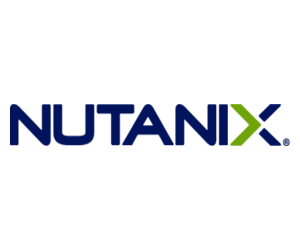BIZTECH: What are they looking for in a hypervisor?
JACKSON: Simplicity. It has to run everything but shouldn’t be in the way. It needs to include security by default. The Nutanix Acropolis Hypervisor is built around zero trust and tenancy of security. Organizations also need a management plane that lets them do everything they want to do all in one place.
CLINE: Costs are also critical. Companies don’t want to pay more than they have to. With Nutanix, it’s a lot cheaper because AHV licensing is included with the cluster. In addition, flexibility — avoiding vendor lock-in — is a key pillar of Nutanix’s philosophy. Customers who want to stick with their existing hardware vendor can continue to leverage the hardware vendor relationship with Nutanix, for a number of original equipment manufacturers. Choice is paramount: choice of hardware, choice of hypervisor and choice of deployment models — on-premises, colocated or in a public cloud with Nutanix Cloud Clusters.
EXPLORE: Virtualization and hypervisor solutions that can improve your IT environment.
BIZTECH: How does Nutanix Acropolis meet those needs?
JACKSON: Acropolis is easy to deploy and can be used side by side with VMware. Secondary sites are a common use case — companies can deploy AHV there and save on costs.
It doesn’t matter what hardware you have. Using the built-in Prism Central workspace, teams can monitor and manage multiple clusters from a centralized environment. It’s very intuitive. Using Life Cycle Manager, patching and upgrades can all be done from the same pane of glass.
BIZTECH: How does Acropolis integrate with existing platforms and technologies?
JACKSON: AHV has over 1,200 solutions that are validated as of today, and the ecosystem is built around that openness. Nutanix wants to make sure your workloads run.
For example, we were working with a large retailer on their point-of-sale system. When we started the conversations, its POS was not supported by AHV. We were able to work with the Nutanix product teams and the POS vendor to get that solution validated for AHV to meet the customer’s needs.
Updates are also simple with AHV. Historically, IT teams had to do updates during maintenance windows — often at inconvenient times for everyone involved — in case something went wrong. Now, they can do updates at 8:30 a.m. on a Monday with a single click. And it’s easy to have multiple copies and synchronize data; companies can have two real-time copies of their data.
FIND OUT: What's the difference between type 1 vs. type 2 hypervisors?
BIZTECH: How does the tech help support cybersecurity efforts?
JACKSON: Prism Central comes with disaster recovery built in. Recovery data can be sent to another location onsite, to a colocated data center or to the public cloud. In addition, AHV offers data-at-rest encryption. This makes it easy to restore data when needed with a simple and intuitive process.
Nutanix is also there when things go bad. The organization has one of the highest Net Promoter Score ratings in the industry, and people love the support experience. Customers are confident that Nutanix will help them work through it.
Brought to you by:













